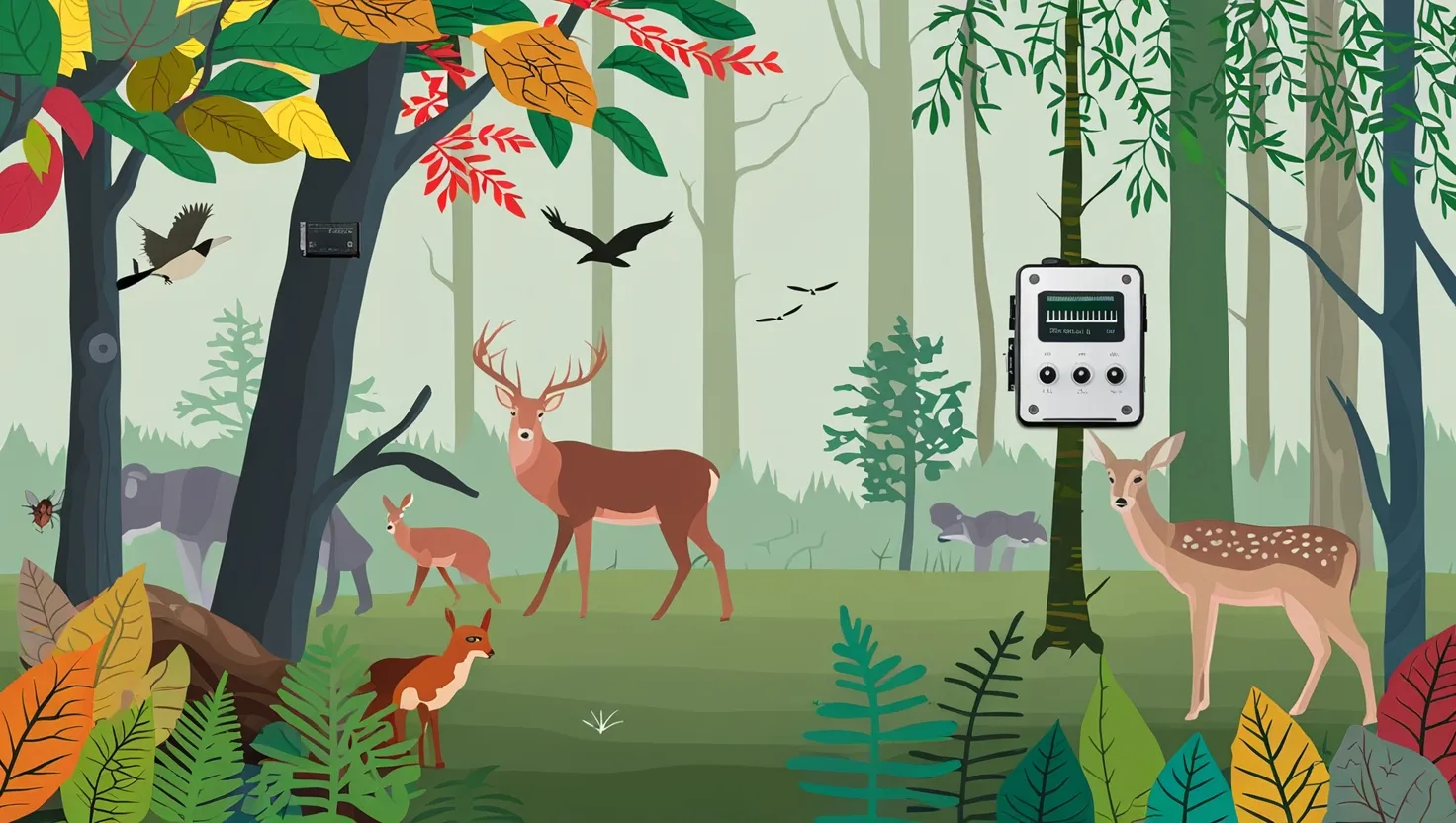In the vast and intricate web of life on Earth, there is a hidden language that speaks volumes about the health of our planet. This language is not visual or tactile, but auditory – the sounds of nature that fill every corner of our ecosystems. The emerging field of ecoacoustics is dedicated to listening to and interpreting these sounds, providing a revolutionary new tool for monitoring ecosystem health, biodiversity, and the impacts of human activities.
Imagine walking through a forest, surrounded by the chirping of birds, the rustling of leaves, and the distant rumble of thunder. Each of these sounds is more than just a noise; it is a piece of a larger symphony that reflects the health and vitality of the ecosystem. Ecoacoustics involves recording and analyzing these soundscapes to gather insights into the presence, abundance, and behavior of different species.
One of the most significant applications of ecoacoustics is in monitoring biodiversity. By listening to the variety of sounds in an area, researchers can determine the health of that ecosystem. For instance, a rich array of bird songs typically indicates a thriving environment, while a decline in animal calls might suggest stress or degradation. This method is particularly useful for tracking animals that are hard to find, such as the night parrot or koalas, which are often elusive and difficult to monitor through traditional means.
Ecoacoustics also offers a unique window into the impacts of climate change and human activities on ecosystems. Shifts in the soundscape can reveal issues like habitat loss, climate change, or human impacts such as deforestation. For example, the arrival of invasive species like cane toads can be detected through changes in the soundscape, allowing for early intervention and management.
Beyond the sounds of animals and environmental noises, ecoacoustics is now delving into the unexplored realm of soil health. By using specialized microphones and recorders placed in the ground, researchers can capture the acoustic vibrations generated by soil-dwelling organisms. These sounds include crackles, clicks, and pops that provide valuable insights into soil health. Healthy soils tend to produce a diverse range of sounds, reflecting a high level of biological activity, while degraded soils are quieter, indicating a reduction in soil life.
This approach is particularly beneficial in precision agriculture, where timely information is crucial for effective soil management and crop production. For instance, farmers can use ecoacoustics to identify areas where earthworm populations are deficient, a critical indicator of soil health since earthworms play a significant role in nutrient cycling and soil fertility. The use of ecoacoustics in soil health monitoring is akin to a doctor listening to a patient’s heartbeat; it provides a non-invasive and continuous way to assess the health of the soil.
The Australian Acoustic Observatory (A2O) is a prime example of how ecoacoustics is being applied on a large scale. Launched in 2019, this network of sound recorders spans across Australia, from Cape York to the red center, and from the lush rivers of Tasmania to the dense forests of Queensland. These recorders capture sounds 24/7, providing continuous monitoring of the environment and tracking changes in animal populations and ecosystem health over time.
This continuous monitoring is especially valuable in remote and hard-to-reach areas where traditional field trips are challenging. Ecoacoustics allows researchers to track the migratory routes of birds, detect the arrival of invasive species, and monitor the recovery of threatened species after events like bushfires. It also provides an “acoustic time machine” by storing sound data over time, enabling scientists to explore historical changes to the environment.
The study of soundscapes is not just about individual species; it also looks at the overall soundscape of an ecosystem. Researchers like Marina Scarpelli are interested in how different ecosystems have different sounds. By planting small sound recorders in various vegetation types, she creates color-coded spectrograms that act as a fingerprint of the environment, showing how it changes over time.
Ecoacoustics is also being used to monitor the health of forests and the effectiveness of restoration efforts. A study in the UK and Australia found that restored soils produce a higher diversity of sounds compared to deforested soils. This is because healthier soils have a greater presence of living organisms, which generate more complex and diverse sounds. The analogy here is that a degraded ecosystem is like an orchestra missing some of its musicians, resulting in less elaborate sounds, while a healthy ecosystem is like a full orchestra, producing richer and more varied music.
The potential of ecoacoustics extends beyond monitoring; it also holds promise for speeding up the restoration process. Researchers have discovered that playing certain sounds to soil can stimulate the growth of beneficial organisms. For example, playing sounds to a type of fungus called Trichoderma, which is widely used in agriculture to protect crops and improve plant health, can effectively stimulate its growth. This preliminary finding suggests that ecoacoustics could be used to encourage beneficial microbial growth in degraded soils, potentially jump-starting restoration efforts.
As this field continues to grow, it is becoming clear that ecoacoustics is an invaluable tool for environmental science. By integrating sound-based methods into conservation efforts, researchers hope to enhance our understanding of ecosystems and support efforts to preserve biodiversity and ecosystem health. It’s a new way of listening to the planet, one that could revolutionize how we manage and protect our natural environments.
In essence, ecoacoustics is about tuning into the natural world in a way that was previously unimaginable. It’s about recognizing that every sound, from the chirp of a bird to the rustle of leaves and the hum of the earth itself, carries valuable information about the health and vitality of our planet. As we continue to explore and develop this field, we are not just listening to the sounds of nature; we are listening to the heartbeat of the Earth, and in doing so, we are gaining a deeper understanding of how to protect and preserve it for future generations.






